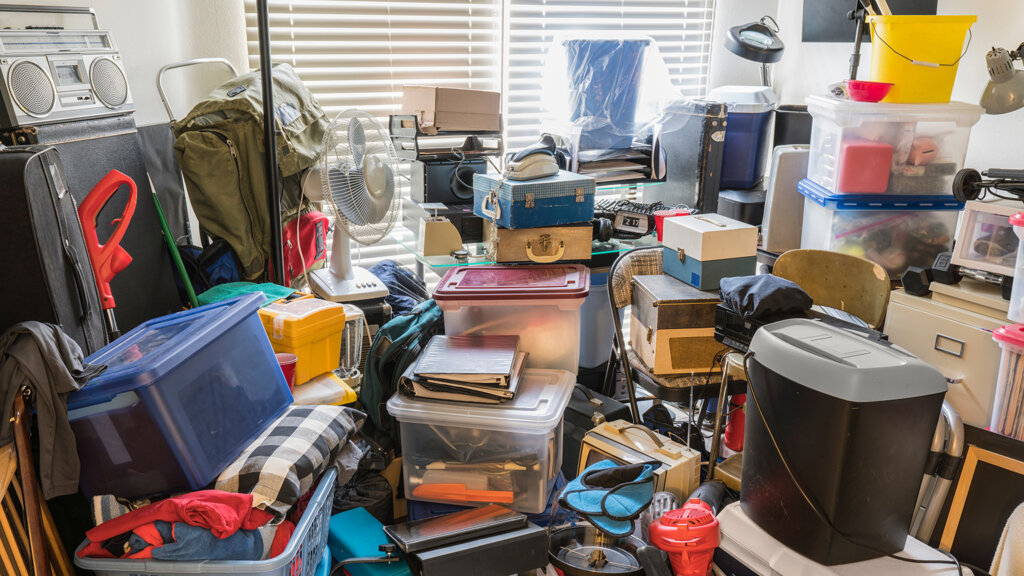What is Hoarding Disorder?
 Key Takeaways
Key Takeaways
-
Hoarding disorder, marked by excessive accumulation of items and clutter, was recognized as a distinct mental health condition in 2013, emphasizing the need for specific diagnostic and treatment strategies.
-
Treatment for hoarding disorder includes Cognitive Behavioral Therapy (CBT), medication, and practical decluttering assistance. Family support and professional organizers also play vital roles in the recovery process.
-
It is essential to distinguish between collecting and hoarding, though diagnosis can be challenging. Collecting is an organized activity that does not impair daily functioning, whereas hoarding involves disorganized accumulation that substantially deteriorates life quality. Identifying the difference is crucial for appropriate diagnosis and intervention.

For over 700 years, the concept of hoarding has been a notable element in European literature, reflecting the social and economic milieu of different eras. Esteemed authors have often imbued their characters with hoarding behaviors, providing a mirror to the times. Notable examples include Miss Flite in Charles Dickens’ “Bleak House” and the Collyer brothers in Franz Lidz’s “Ghosty Men.” Similarly, in “Great Expectations,” Dickens presents Miss Havisham as a character who compulsively hoards remnants of her past. These depictions in literature not only illustrate hoarding behaviors but also offer insights into the historical and economic contexts that influenced these portrayals, enhancing our understanding of hoarding’s evolution through time.
Hoarding is a mental health condition characterized by the excessive collection and retention of items, leading to clutter that disrupts an individual’s living space and daily functioning. This behavior stems from an ongoing difficulty in discarding possessions, irrespective of their value, causing distress and significant impairment. Historically linked with Obsessive Compulsive Disorder (OCD), hoarding was reclassified as a separate entity in the Diagnostic and Statistical Manual of Mental Disorders, Fifth Edition (DSM-5) in 2013.
This reclassification acknowledges its unique symptoms and challenges, distinguishing it from an OCD, which is a Personality Disorder. This reclassification marked a significant shift in understanding hoarding as a distinct mental health condition, necessitating tailored approaches in diagnosis and treatment.
Why Hoarding Disorder is On the Rise
Hoarding disorder is on the rise, with studies indicating that between 2% and 6% of the U.S. population is affected, a prevalence echoed in the UK with estimates around 5%. This increase can be attributed to various socio-economic factors, including the availability of disposable income in developed countries, which facilitates the accumulation of both valuable and seemingly valueless items. The disorder’s evolution from essential resource stockpiling to the modern-day collection of non-essential goods reflects changing societal norms and economic conditions.
The fascination and media representation of hoarding, through reality shows and documentaries, have brought the disorder into public consciousness, simultaneously creating a spectacle, and increasing awareness.
Demographic changes, particularly the increase in the elderly population who are more prone to hoarding, contribute to the disorder’s prevalence. Isolation, loneliness, and mental health issues like depression, often more common in older adults, are significant factors in hoarding behavior. Additionally, the COVID-19 pandemic has exacerbated hoarding tendencies, with the ensuing fear, isolation, and uncertainty prompting a surge in acquiring and storing essentials and non-essentials alike. This response to the pandemic hints at a potential long-term impact on hoarding behavior across all age groups.
Symptoms of Hoarding Disorder and How It Is Diagnosed
Symptoms of hoarding disorder include the persistent accumulation of items, regardless of their actual value, leading to cluttered living spaces that impair use and safe navigation. Individuals with this disorder often experience severe anxiety when attempting to discard items, leading to a continuous accumulation that exacerbates the situation. They may also exhibit indecisiveness, distress, and avoidance behavior when faced with the need to organize or discard possessions. These symptoms result in significant distress or problems in social, occupational, or other important areas of functioning.
Hoarding disorder is characterized by difficulty parting with possessions, regardless of their value, leading to clutter that disrupts living spaces and daily activities. Affected individuals exhibit a perceived need to save these items and experience distress at the thought of discarding them. This behavior often results in the accumulation of possessions that congest and clutter living areas, significantly impairing their intended use.
Hoarding can take several forms, each with distinct characteristics and associated challenges. Based on information from various sources, the most common types of hoarding include:
- Animal Hoarding: Accumulating excessive numbers of animals without the ability to provide proper care, leading to unhealthy living conditions.
- Food Hoarding: Stockpiling perishable or non-perishable food items beyond necessity, often resulting in waste and unsanitary conditions.
- Paper Hoarding: Collecting papers, documents, newspapers, and magazines to an extent that it clutters living spaces and disrupts daily life.
- Trash Hoarding: Keeping items that are considered garbage or have no value, leading to unsanitary living conditions and potential health hazards.
- Sentimental Hoarding: Holding onto items of personal significance, often to an excessive degree, due to emotional attachment.
- Shopper Hoarding: Compulsive buying and accumulation of items, often leading to financial problems and a home filled with unused goods.
LifeStance Health is a national leader in mental, behavioral, and emotional wellness with multiple locations in 33 states. Services vary by location.
Find a provider near you:
- Arizona
- California
- Colorado
- Delaware
- Florida
- Georgia
- Illinois
- Indiana
- Kansas
- Kentucky
- Maine
- Maryland
- Massachusetts
- Michigan
- Minnesota
- Missouri
- Nevada
- New Hampshire
- New Jersey
- New York
- North Carolina
- Ohio
- Oklahoma
- Oregon
- Pennsylvania
- Rhode Island
- South Carolina
- Tennessee
- Texas
- Utah
- Virginia
- Washington
- Wisconsin
Hoarding vs Collecting
It is essential to distinguish between collecting and hoarding. The primary difference between collecting and hoarding lies in the organization, value, and impact on the individual’s life. Collecting involves acquiring and keeping items of a specific type or category, often with a sense of pride and purpose. Collectors typically organize and display their items carefully, deriving joy and satisfaction from their collection. They maintain a balance that ensures their collecting habits do not interfere with their daily living, social interactions, or financial stability.
Hoarding, on the other hand, is characterized by the excessive accumulation of items, regardless of their actual value or utility. Hoarders often keep a vast array of items, including those considered worthless or trash by others. Unlike collecting, hoarding leads to clutter and disorganization, significantly impairing the individual’s living space, safety, and functionality. Hoarding is driven by an intense fear of losing items that might be needed in the future, leading to distress at the thought of discarding them. This behavior often results in negative emotional, physical, social, and financial consequences, and is recognized as a mental health disorder that requires treatment.
Diagnosis of hoarding disorder is typically made by mental health professionals, such as psychiatrists or clinical psychologists, who conduct comprehensive evaluations based on the criteria outlined in the Diagnostic and Statistical Manual of Mental Disorders (DSM-5).
The assessment includes detailed interviews, observation of the individual’s living conditions, and sometimes input from family members or close associates. To be diagnosed with hoarding disorder, the individual must exhibit the symptoms to a degree that they cause significant distress or impairment in occupational, social, or other important areas of functioning, and these symptoms must not be attributable to another medical condition or mental disorder.
Hoarding Disorder Treatment
Treating hoarding disorder involves a multifaceted approach, combining psychotherapy, medication, and practical assistance in decluttering. Cognitive-behavioral therapy (CBT) is the most common and effective form of psychological treatment. It helps individuals understand the reasons behind their hoarding behavior, develop decision-making and organizational skills, and gradually reduce their need to acquire and save items. CBT sessions may include visits to the person’s home by the therapist to address hoarding behavior in the environment where it occurs.
Antidepressant medications, which are usually selective serotonin reuptake inhibitors (SSRIs), can be prescribed to treat underlying depression or anxiety that often accompanies hoarding. However, medication is typically more effective when used in conjunction with therapy rather than as a standalone treatment.
Support groups and community resources also play a crucial role in treatment, providing social support and practical help with decluttering. These resources can include professional organizers who specialize in hoarding situations, social services, and community-based programs designed to assist with cleaning and organizing the home.
Family involvement is essential in the treatment process, offering emotional support and assisting with the practical aspects of decluttering and organizing the home. However, it’s important for family members to approach the situation with empathy and understanding, as pressure and criticism can exacerbate the hoarder’s distress and resistance to change.
Overall, successful treatment of hoarding disorder requires a comprehensive, compassionate approach that addresses both the psychological and practical aspects of the disorder.
Reviewed By

Nicholette is a faculty member at John Carroll University’s Clinical Counseling program, and she is also the host of the LifeStance podcast, Convos from the Couch.

